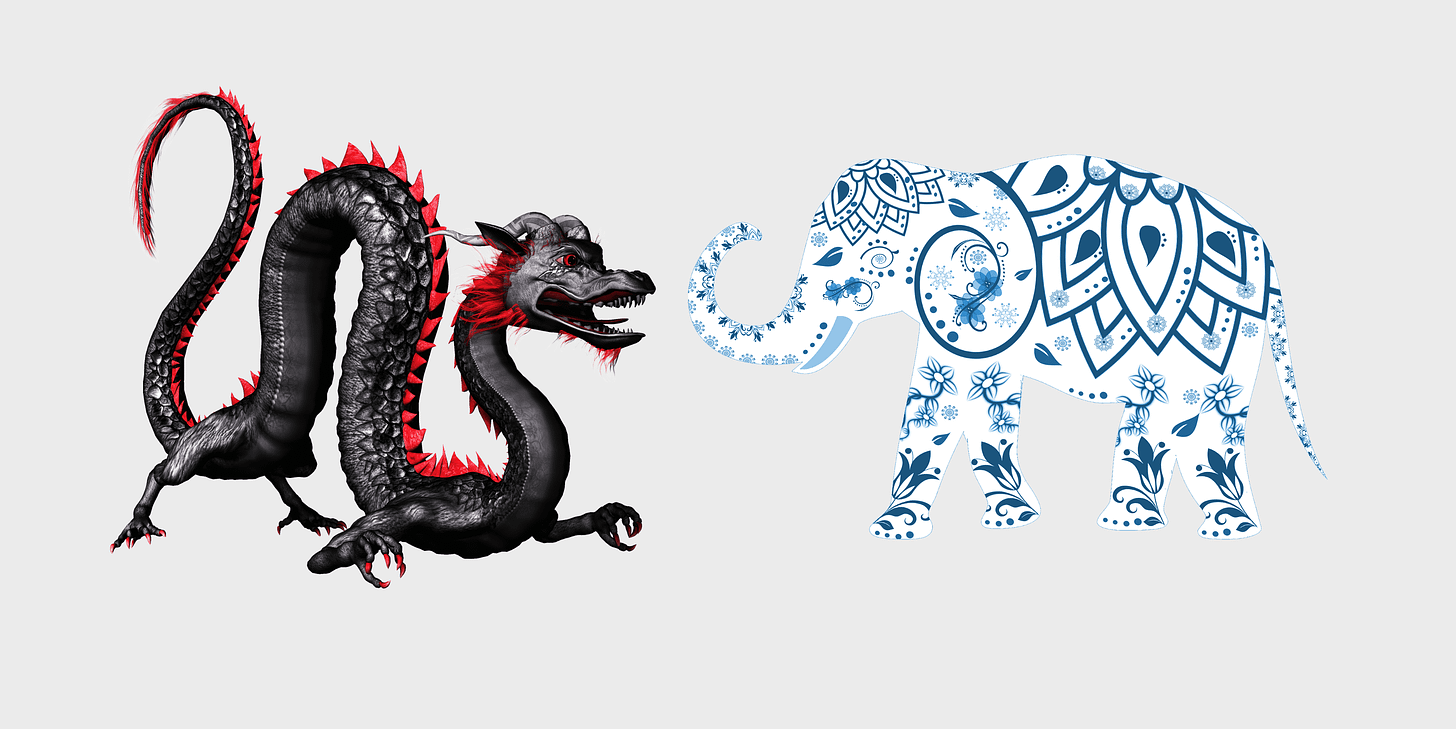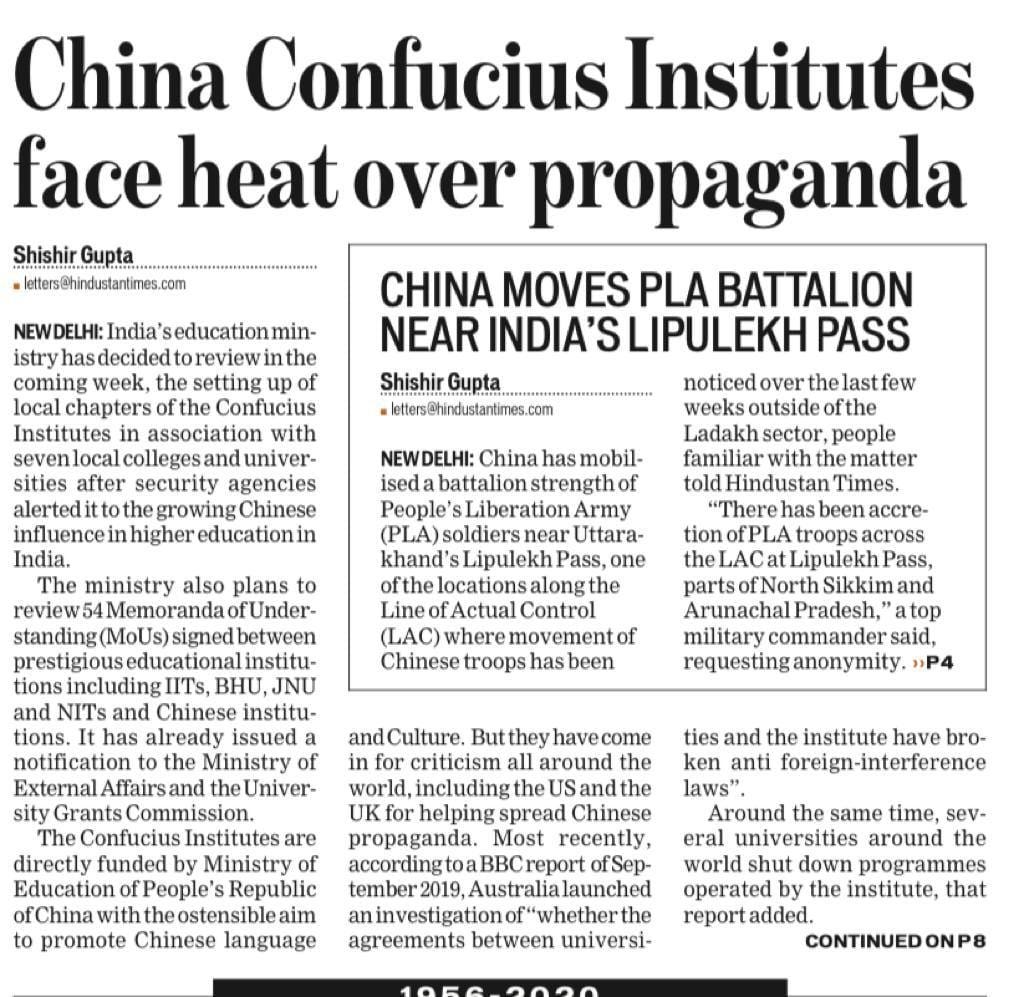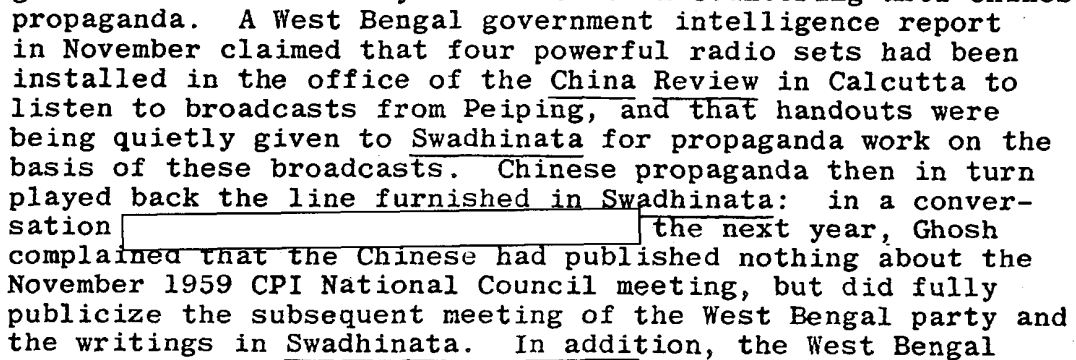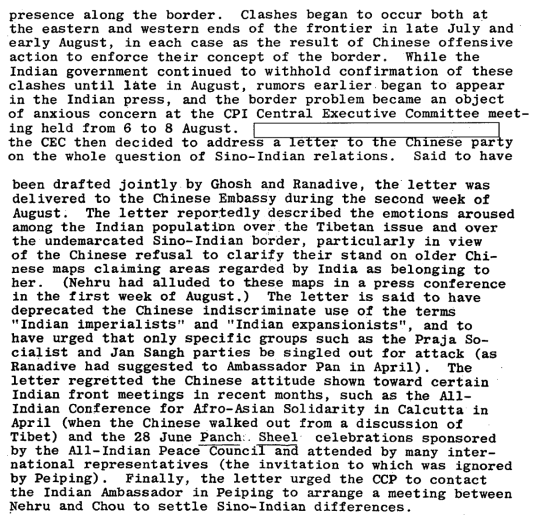Chinese media influence and Subversion of India

Richard Gere was one of the top A-list actors in Hollywood in the 1980s and the 1990s. He starred in all-time classics like Pretty Woman, An Officer, and a Gentleman, Runaway Bride, and Internal Affairs. As he walked down to present the award for best art direction in the 1993 Oscars, Gere went off his script.
He discussed the “horrendous human rights situation” in China and the occupation of Tibet and asked for the freedom of Tibet.
He was not only banned from all the Academy Awards since that time onwards, but he was refused movies by all the major studios thereafter.
That he called for the boycott of the Beijing Olympics in 2008 didn’t help his matters.
“There are definitely movies that I can’t be in because the Chinese will say, ‘Not with him,’ ” he acknowledges matter-of-factly. “I recently had an episode where someone said they could not finance a film with me because it would upset the Chinese.”Source
The career of probably one of the best looking actors from Hollywood in the last 40 years was sabotaged by the Chinese influence in the US movie industry.
Chinese media Influence and complete takeover
Unbeknownst to many, a Chinese company called Dalian Wanda has become the largest media empire in the world. Check this list (Source):
Dalian Wanda Group Wanda spent $1 billion to acquire the producer of the Golden Globes, American Music Awards and “New Year’s Rockin’ Eve.”
Dalian Wanda paid $2.6 billion in 2012 for AMC Entertainment, the parent of AMC Theatres, the second-largest theater chain in the U.S
Dalian Wanda Group Wanda-owned AMC paid $1.2 billion to acquire Carmike Cinemas in a deal that just closed in November 2015. The combined chain will be America’s largest theatrical exhibitor, passing former No. 1 Regal Entertainment
DW paid $3.5 billion for the “Jurassic World” production company in January 2016
Anhui Xinke New Materials Anhui Xinke, a copper processing company, bought an 80 percent stake in Voltage parent Midnight Entertainment for $351 million. Voltage is the production company behind Oscar-winning films including “The Hurt Locker” and “Dallas Buyers Club.”
Tencent Independent distributor STX was founded with investments from private equity giant TPG and Chinese firm Hony Capital. The company also has a co-financing deal with China’s Huayi Bros. Media, and this year secured a strategic investment from Tencent to expand into digital content, music and virtual reality
Dalian Wanda Group Wanda paid $650 million last year for the company that organizes the Ironman Triathlon races, folding it into its new Wanda Sports division
Tang Media Partners, which has offices in Shanghai and L.A., acquired a controlling stake in Stuart Ford’s film finance firm from Indian conglomerate Reliance in June 2016. IM Global has financed or produced more than 30 Hollywood films, including Mel Gibson’s “Hacksaw Ridge.”
TPG and Fosun acquired a majority stake in Cirque du Soleil for $1.5 billion in 2015
Once you look at what all the Chinese control in US entertainment industry you understand why Gere was banned.
All this takeover of Hollywood by the Chinese companies doesn’t come easy. It comes with strings attached. Those strings are influencing scripts, stories, and plots in the movies.
Hollywood studios have been known to alter films to feature China or the Chinese government in a more flattering light to gain access to the country’s lucrative film market (Source)
With a huge movie market and cash-rich equity funds, China has been successfully taking over the source of the biggest soft-power that the US had and turning the giant power-spinner in the world around to work for itself. Sanitize its ways, crimes, and image.
How Chinese companies now control India’s future
Over the last few years, the Chinese IT and tech companies like Xiaomi, Oppo, Vivo, and Huawei have secured 100% FDI in contract manufacturing in India with plants in Andhra Pradesh, Greater Noida and Tamil Nadu. The Chinese MG motors, BYD auto, Colsight, YAPP Automobiles have been growing fast in India. In fact, the Chinese auto giant BYD Motors has supplied electric buses to state governments in recent years.
The biggest threat to the corporate future in India comes from the Chinese investments in Indian startups. Many unicorns (over $1 bn valuation start-ups) have substantial Chinese investments. Check the main start-ups which have major Chinese share-holdings – Bigbasket, Zomato, Delhivery, Byju’s Flipkart, Make my trip, Paytm, Policy Bazaar, and Swiggy.
The largest online payment transaction engine in India – Paytm and Paytm Mall – have over $550 million of investment by the Alibaba group.
The issue is that even till today, India does not have a Sequoia or such a large VC of its own. So, the large start-ups – the unicorns specifically – have to depend on foreign money. And, these days that has largely been coming from China.
China and Dictating the Global Narrative – Chinese Media Influence
Chinese state media campaigns have included promoting fake images purporting them to be of a “foreign commander” of the Hong Kong protests, when that person was of Kevin Roche, an employee of the New York Times newspaper, who was photographed communicating with other NYT journalists covering the July 28, 2019 protest. In another instance, CCTV, the state broadcaster and China Daily shared a poem that was a rewrite of the famous anti-Nazi poem. (Source)
Hong Kongers, are you going to remain silent? #HongKong pic.twitter.com/pvgCwfsVEm
— CCTV (@CCTV) August 17, 2019
China has been using “third-party spokespeople” who have been ‘cultivated’ by Chinese lobbyists in the US to create vocal supporters of the Chines establishment. In 2003, when the official document for objectives of People’s Liberation Army (PLA) was revised, “media warfare” became an important and explicit part of China’s military strategy.
“Their view of national security involves pre-emption in the world of ideas,” says former CIA analyst Peter Mattis, who is now a fellow in the China programme at the Jamestown Foundation, a security-focused Washington thinktank. “The whole point of pushing that kind of propaganda out is to preclude or preempt decisions that would go against the People’s Republic of China.”(Source)
Nigerian investigative journalist Dayo Aiyetan had set up The International Center for Investigative Reporting, ICIR and had exposed the thriving illegal trade in timber from Nigeria and a large part of West Africa being carried on by the Chinese businesses in 2016. He had received a call from someone with a job offer at the China Central Television (CCTV) – the state broadcaster, which had opened up a hub in Nigeria some time back. Double the money and job security. He refused.
Confucius Institutes and World education
One of the ways that the Chinese are infiltrating the education system – colleges and K-12 (Kindergarten to 12th grade) – is through its, innocuously named, Confucius institutes. Even though the parent organization is marketed as a Non-Profit Organization, it is part of the Chinese establishment tool.
Hanban is in fact controlled by high officials of the Chinese party-state implementing the policies of the PRC propaganda apparatus. The governing council of Hanban, which annually sets its agenda, has long been headed by a member of the Politburo. A number of its ranking officials, beside their high status in such ministries as foreign affairs, finance and national development, are members of so-called small leading groups of the Party’s propaganda and ideology sections — which thus function as conduits for the realization of Politburo policies in the operations of Confucius Institutes. (Source)
These Confucius Institutes have been working to infiltrate for the last two decades. 550 Confucius Institutes have been created globally since 2004. Roughly 100 in the United States and 29 in the United Kingdom. Around 1200 Confucius classrooms are based in primary and secondary schools.
How does the partnership work?
The CIs are joint ventures between the host university or school, a partner university in China, and Hanban, a controversial agency under China’s education ministry. It oversees CI operations and provides partial funding, staff, and other support. Source – BBC
The same Hanban which has close ties with the Politburo of the Chinese Communist Party.
In India 54 MoUs had been signed between the Confucius Institutes and some prestigious Indian Universities like the IITs, BHU, JNU and NITs. All these MoUs are being reviewed by the Indian government.
But all this did not start here.
1961 Indo-China War and Communist Treason
As the Chinese attacked India in 1961, the Communist Party was going through an upheaval within.
The year was 1962, the Communists had held China above Indian national interests. This understanding had taken ground within India. The government had thrown some of these Communist leaders in jail. (Source – Indian Express archive)
Some of these Communist leaders in jail wanted to handle this narrative by positing some other narrative. So VS Achuthanandan suggested two ideas:
donating blood for the jawans
contributing money from the sale of prison rations saved by inmates to the defense kitty of the government
O J Joseph, who later became the Rajya Sabha member as well, rejected the idea. Communists would never donate blood for the Indian jawans!
When VS tried to bring up the matter again in the next meeting, a major scuffle happened between him and OJ.
Later VS dropped his plan.
Established Traitors at the helm
After the war, 50+ Communist leaders had been thrown into the jail. Two of them were Jyoti Basu and Harkishan Singh Surjeet. (Source: South China Morning Post). Interestingly, as per the CIA declassified papers, 4 radio sets were found in China Review in Calcutta to listen to the broadcasts from Peking (now Beijing).
The Communist leaders who were communicating with the Chinese during the 1961 via the radio sets and carrying out the Chinese propaganda within India later became Members of Parliament and even the Chief Minister of India’s most progressive state!
Jaipal Singh, also known as Major because he was in the British Indian Army, was the head of the illegal organization within the Indian Army. He had decided to reactivate his organization in May 1961 following the hard left faction gaining control of the party. That is how the Communists infiltrated the Indian Army in the middle of the Indo-China war!
Review these CIA declassified documents for better understanding of the role played by the Communists and also read “How Indian Communists committed Acts of Treason against the Indian state” – for a detailed discussion on how the Communists have undermined India.
1. The Sino-Indian Border Dispute Section 1: 1950-59
2. The Sino-Indian Border Dispute Section 2: 1959-61
3. The Sino-Indian Border Dispute Section 3: 1961-62
4. The Indian Communist Party and Sino-Soviet Dispute
Here are some important points taken from the documents above:
HK Surjeet influenced by Russia to set up an underground organization
CPI did proceed to recruit a secret organization within the Indian Army
China Russia insisted that the CPI must develop a standby apparatus capable of armed resistance while intensifying penetration of Indian Military forces.
4 powerful radio sets had been installed in the office of the China Review in Calcutta to listen to broadcasts from Peking
Chinese Financial Subsidies to sections of the CPI particularly the left faction strongholds in West Bengal
a foreign supply base was now available for the underground organizations with the Chinese occupation of Tibet and other frontier areas
letter asking for collaboration in Indian underground organization work aimed at an eventual revolution, because China has a border with India and can provide arms and supplies
– Also, Jaipal Singh, head of the illegal organization within the Indian Army decided to reactivate his organization in May 1961 following the hard left faction gaining control of the partyNehru believed China’s Communist Leaders were amenable to Gentlemanly persuasion
Nehru’s strategy was defensive and he believed strengthening Indian Economy to resist a Chinese Military Attack was adequate
China’s short term policy was not to alert Nehru on the wide gap between Chinese and Indian claims on the border and hence they lied about Chinese maps
Chinese leaders recognized that India neither by temperament nor by capability was a Military threat
China’s strategy was to use diplomatic channels to cut out the Indian press, public, and parliament. It was a 5-year masterpiece in guile. It played on Nehru’s Asian anti-imperialist mental attitude his proclivity to temporize and his sincerity for peace with China.
Had it not been Nehru but a more military-minded man who was Prime Minister in Oct 1959, a priority program to prepare India to eventually fight would have been started.
In February 1959, Ajoy Ghosh in his report to the Central Executive Committee that China Russia insisted that the CPI must develop a standby apparatus capable of armed resistance while intensifying penetration of Indian Military forces.
From 6 to 8 August 1959 hard leftists urged a revival of CPI illegal apparatus to be run from the party secretariat
the CEC then decided to address a letter to the Chinese par on the whole question of Sino-Indian relations. Said to have been drafted jointly by Ghosh and Ranadive, the letter was
delivered to the Chinese Embassy during the second week of August. The letter reportedly described the emotions aroused among the Indian population over the Tibetan issue and over
the undemarcated Sino-Indian border, particularly in view of the Chinese refusal to clarify their stand on older Chinese
maps claiming areas regarded by India as belonging to her. (Nehru had alluded to these maps i n a press conference in the first week of August.) The letter is said to have
deprecated the Chinese indiscriminate use of the terms “Indian imperialists ” and “Indian expansionists” and to have urged that only specific groups such as the Praja Socialist
and Jan Sangh parties be singled out for attack (as Ranadive had suggested to Ambassador Pan in April).(Argument from the hard left:) with the PLA now present along the Indian Border the Indian Party had a channel of support for Armed Operations and a potential liberator in the event of mass uprisings. (13 Sept 1959)
These facts bring out not only the role played by the Indian Communists during the Indo-China war but also their real character.
As the narrative tide was turning against the Communists in India, Ajoy Ghosh and BT Ranadive wrote a letter to the Chinese to desist from calling everyone in Indian politics as “Indian imperialists” and “Indian expansionists”. Instead they said that two parties in India should be targeted for attacks – Jayaprakash Narayan’s Praja Socialist Party and Jan Sangh – BJP’s predecessor.
The origins of the narrative against the Jan Sangh / BJP / RSS by the left, while letting Congress off the hook (in fact even working with them) has its origins here.
What is behind the hatred for the Hindu Civilization within the Chinese establishment. We believe it has to do with the sense of history within the Chinese mind. If you watch movies like Ip Man and even Bruce Lee movies, you will see how the Chinese still cannot forget the atrocities and the humiliation that the British and Japanese brought upon them. What we see in terms of Chinese actions in the West – Europe and US specifically – seem to have their origin in that sense of history.
As for India – again, the Chinese believe that their thought, spirituality, philosophy was dominated by the Indian civilizational ethos. One way to be completely free for China was to not just bury its past – therefore, the Chinese ‘Cultural revolution’, which destroyed China’s entire ancient culture – as well as attack the very source of that past culture – Indian civilization.
And no one could have said it better than a Chinese himself. Hu Shih, former Ambassador of China to USA had once said “India conquered and dominated China culturally for 20 centuries without ever having to send a single soldier across her border.”
Using Indian media for propaganda
During the COVID, the world opinion has turned against China. So what has China done?
It has tried to buy positive across the world, even India. By simply coopting the journalists in various newspapers.
A 2018 news report shared how China purchases media influence in India. Over 100 journalists from around the world had been given special “privileges”, a euphemism for bribes, by the Chinese government. The privileges include personal benefits to access within the Chinese administration, which is otherwise restricted.
For 10 months every year, starting 2016, China’s foreign ministry has hosted around 100 foreign journalists from leading media houses in Asia and Africa. They have been given the red-carpet treatment: apartments in one of Beijing’s plush residences, the Jianguomen Diplomatic Compound, where a two-bedroom apartment costs 22,000 Yuan (Rs 2.4 lakh), a 5,000 Yuan monthly stipend for some (Rs 50,000) and free tours twice-every-month to different Chinese provinces. They are also given language classes and at the end of the programme, they are given degrees in international relations from a Chinese university. (Source)
Paying the journalists to tell a “good story” about China stems from Xi Jinping’s fetish to paint a new narrative for China around the world.
China should be portrayed as a civilized country featuring a rich history, ethnic unity, and cultural diversity, and as an Eastern power with good government, a developed economy, cultural prosperity, national unity, and beautiful scenery. China should also be known as a responsible country that advocates peace and development, safeguards international fairness and justice, [and] makes a positive contribution to humanity.
–Source (Anne-Marie Brady, “China’s Foreign Propaganda Machine.”)
Here is a very detailed map of the instances and countries where the Chinese establishment has influenced or even throtted the media.
What China did across the world, specifically Asia and Africa – buying journalists; they did better in Indian media during the recent attack in Galwan Valley in Ladakh.
They simply bought Opeds and many news agencies and newspapers provided a useful platform to the Chinese establishment to share their propaganda on the Galwan attack, while denigrating the Indian government and forces.
“Wherever the readers are, wherever the viewers are, that is where propaganda reports must extend their tentacles.”
–Xi Jinping, February 2016 (Source)
Chinese media influence and its ramifications
There are always two fold objectives of propaganda – (1) positive stories for oneself and destroying the other.
For last many centuries, Bengal had been at the forefront of the Indian spiritual and political revivalism. When one looks at post 1947, one can find that the state where both men and women had undertaken the most British-established education was Bengal. It was therefore the most ideal target for anyone who wanted to subvert the Indian nation.
Just think of it – the person who was arrested after one of the most important wars involving India in the modern era – the 1961/62 Indo-China war – for colluding with the Chinese over radio sets in Calcutta – went onto the become the longest serving Chief Minister in the country and that too for Bengal, the most progressive state.
And, he dutifully destroyed Bengal and its economy completely.
Media influence does not happen in a vacuum. The journalists, editors and the intellectuals are prepared over a period of time and the society is numbed into submission and to brush aside it’s own destruction. It is then that the propaganda is pushed through.
Meanwhile, if you buy over the important media and news platforms, then you can directly make the intervention.
That is what China has been doing in India.







